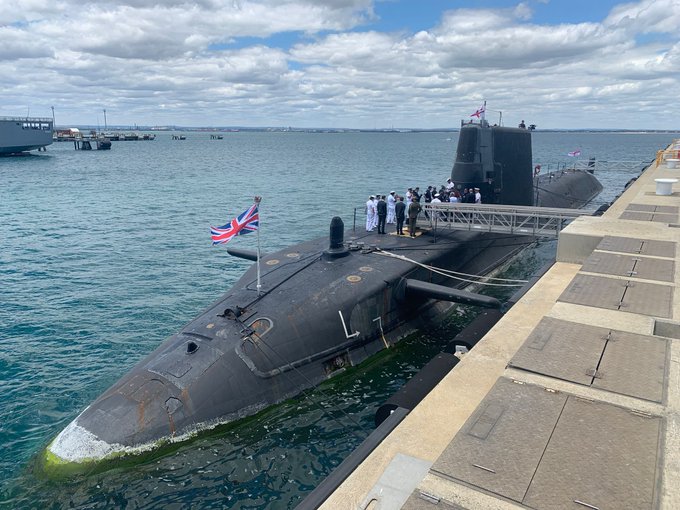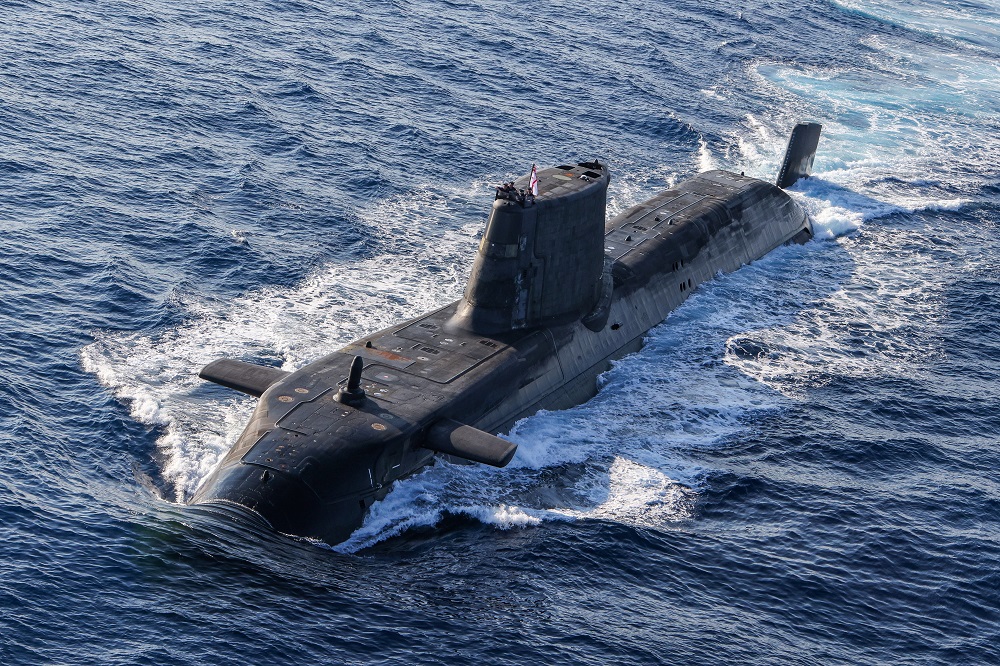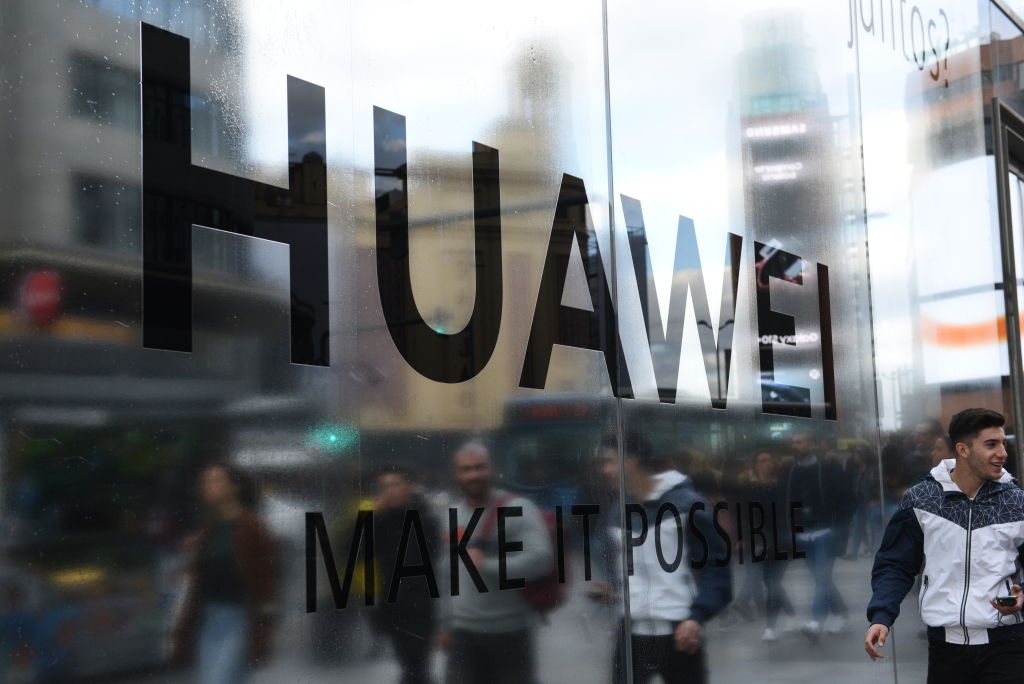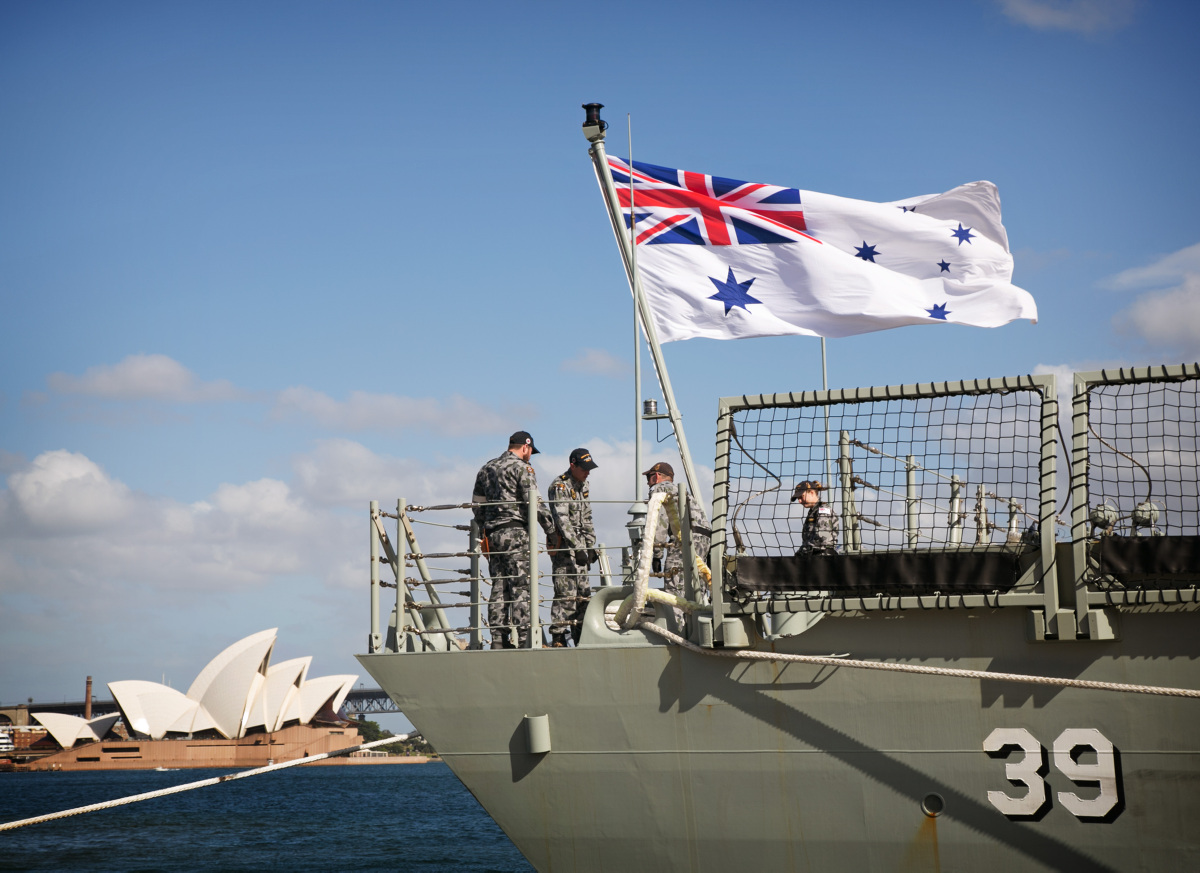
The UK’s tilt back to the Indo-Pacific has had no shortage of critics, including in Australia, but it has achieved tangible results and has lifted Britain’s importance in the region. As the frothy post-Brexit rhetoric of Global Britain recedes, London is striking a more sober tone as it plans how to build on the tilt’s foundations in a manner resilient to political cycles.
The recoupling of Britain’s strategic horizons to the Indo-Pacific presents opportunities for Australia far beyond AUKUS, which is marking one year since the announcement of the optimal pathway to acquiring nuclear-powered submarines, provided Canberra calibrates for potential dissonance between the UK’s aims and resources. Canberra must also prepare for subtle changes to the UK’s approach to the Indo-Pacific if, as expected, Labour wins the general election there this year.
Officially, the UK’s Indo-Pacific tilt was a foundational phase that has been successfully completed. Launching the 2023 refresh of the UK’s integrated review of security, defence, development and foreign policy priorities, Prime Minister Rishi Sunak closed the books on the tilt by listing the UK’s achievements in recent years, which include becoming an ASEAN dialogue partner, acceding to the CPTPP trade bloc and bolstering its diplomatic presence the region.
Defence has provided the most eye-catching embodiment of the tilt, notably the visit as far as Japan of one of the UK’s two aircraft carriers, accompanied by Royal Navy and multinational escorts in 2021. But the real substance of the tilt in defence terms has been London’s rigorous pursuit of deeper partnerships in our region.
AUKUS gets the lion’s share of our attention, but the UK has announced defence roadmaps, frameworks and other initiatives with countries including India, South Korea, Singapore and Indonesia. Britain became the first country after Australia to seal a reciprocal access agreement with Japan, and will jointly develop a 6th-generation stealth fighter with Japan and Italy. Many of these arrangements could yield benefits for Canberra, especially as Australia’s own defence cooperation with Japan is at an unprecedented level.
While Sunak has declared victory in terms of delivering the tilt, the Brits are not going home. This year, the Royal Navy’s littoral response group, a high-readiness force focused on amphibious operations, should exercise in the region with India and other partners. And a carrier strike group will again travel as far as Japan in 2025, which Defence Secretary Grant Shapps is calling the UK’s ‘flagship deployment’, reflecting the range of partners that will interact with the task group.
Longer term, the Royal Navy might upgrade its persistent presence in the region of River class offshore patrol vessels to more battleworthy Type-31 frigates. Astute class attack submarines are already visiting Australia on an increased tempo under the UK’s commitments to the AUKUS optimal pathway, and should, alongside the US, form a joint rotational force at HMAS Stirling in Western Australia from as early as 2027.
These fresh deployments complement the UK’s longstanding regional defence presence, including a permanent military footprint in Brunei and Singapore. An expanded defence attaché network, which includes a newly resident DA in Suva, is now being coordinated in Southeast Asia and Oceania by British defence staff hubs in Singapore and Australia. And an upcoming agreement with Mauritius is expected to allow the UK and US to continue using the Diego Garcia military base on the British Indian Ocean Territory.
In a speech in January entitled ‘defending Britain from a more dangerous world’, Shapps helps explain why the UK is investing so much of its precious defence resources in the Indo-Pacific. Shapps joined the dots between Iranian and North Korean military supplies to Russia, as well as the Putin-Xi ‘no limits partnership’, to argue that our adversaries are already working more closely together; therefore, as Shapps puts it, ‘to shore up the international order, we must be able to act globally’. This gels with the description in the UK’s 2023 defence command paper of SSN AUKUS, the nuclear-powered submarine that will be built and operated with Australia, as ‘a truly global capability’.
Shapps’ view also resonates with wider, although far from universal, international recognition of the links between Indo-Pacific and Euro-Atlantic security, reflecting growing awareness of China’s coercive reach and the shock of Russia’s full-scale invasion of Ukraine. As Foreign Secretary David Cameron told the UN Security Council in February, ‘if we give into the idea that one country can invade another with impunity, then we will be left in a dreadful situation where any country could face a similar fate’.
Robust rhetoric and defence posture aside, questions remain about how much of a stake any British government would have in an Indo-Pacific crisis or conflict where it lacks legally binding security commitments equivalent to the North Atlantic Treaty.
We cannot expect the UK to publish its war plans, but London has confirmed that its crisis planning covers ‘all levers of government’ in ‘a range of scenarios globally’, responding to a recommendation by a parliamentary defence committee that Britain work with allies and partners on Taiwan contingencies. In the same vein, while the threats are not specified, the 2022 Australia-UK 2+2 meeting of foreign and defence ministers (AUKMIN) committed both sides to a series of tabletop exercises, as well as information-sharing and coordination in the event of a regional crisis.
Whatever plans are made during peacetime, any UK role in an actual Indo-Pacific crisis or conflict would have to be calibrated against the security situation in Europe. Backfilling in Europe or providing maritime security that frees up US forces might be just as valuable as any direct military contribution in the Indo-Pacific. Even so, the UK’s increasingly visible defence presence in our region, which is coordinated to some extent with France and other European countries, should have a deterrence effect by—to borrow Australian Deputy Prime Minister Richard Marles’ phrase—putting a question mark in any adversary’s mind.
Sustained support at the top levels of the UK government will be essential to protect resources earmarked for the Indo-Pacific amid a cost-of-living crisis and pressure on the defence budget. Once commitments to Ukraine, munitions stockpiles and contingencies for overspend on the nuclear deterrent are factored in, the UK’s defence budget should rise by 1.8% in real terms over the next financial year, keeping spending above 2% of gross domestic product. But Chancellor Jeremy Hunt’s caveat that defence spending will only be brought up to 2.5% ‘as soon as economic conditions allow’ feels out of step with the Shapps’ commitment to the ‘largest sustained increase in defence spending since the Cold War.’
Indo-Pacific policy and defence spending are unlikely to be key electoral battlegrounds this year, especially as opposition leader Keir Starmer has pledged that ‘never again will Labour go into an election not being trusted on national security’. Even so, conspicuous bipartisanship would help allay any concerns that allies and partners might have about the durability of Britain’s commitments. There is already plenty of common ground. Addressing the Policy Exchange think tank last month, shadow defence secretary John Healey said that the move ‘from a post-war to a pre-war world’ outlined in Shapps’ January speech was ‘deeply sobering’ and something that all sections of British society ‘need to take seriously’. Similarly, Starmer has consistently reiterated Labour’s support for AUKUS since it was announced in 2021.
In the same vein, we should be wary of misreading Labour’s call for an audit of UK-China relations, which is intended to provide policy coherence across government rather than roll back the clock to the naive excesses of the ‘golden era’. Laying out Labour’s vision for ‘Britain Reconnected’, shadow foreign secretary David Lammy advocated standing with Australia and others to manage Xi Jinping’s ‘authoritarian turn’. Lammy’s plain-speaking reflects growing bipartisan consensus about the dangers posed by Beijing that is rooted in British public opinion.
But there are glimmers of daylight between Conservative and Labour positions on the Indo-Pacific that Canberra must keep in focus.
First, Labour seems somewhat uncomfortable with the term Indo-Pacific, perhaps because it was ushered into British political parlance in the wake of Brexit. Labour’s shadow minister for the region, Catherine West, presently describes her portfolio as Asia and the Pacific, in contrast to the incumbent minister for the Indo-Pacific, Anne-Marie Trevelyan. While this seems minor, words matter. The strategic connectedness of the Indian and Pacific oceans is more than just a soundbite, which is why Beijing will keep trying to undermine the Indo-Pacific concept that Australia helped champion.
Australia and our regional partners needn’t lament a Labour government in the UK jettisoning talk of Global Britain or tilting this way or that, but now is the time to explain to Labour’s key foreign and defence policy thinkers why Indo-Pacific nomenclature has strategic resonance. Backsliding would be particularly saddening because London was relatively late to adopt Indo-Pacific terminology, wasting years prior to the 2021 integrated review grappling with incoherent rhetorical stopgaps like ‘All of Asia’, which left the UK flagging behind the likes of ASEAN and France, not to mention trailblazers like Australia and Japan.
Australian diplomats should also quietly remind Lammy that his plan to ‘build on partnerships with a rising India’ could hinge on the UK’s approach to the Indo-Pacific concept, which Prime Minister Narendra Modi is personally invested in, including through the Quad.
Second, Labour appears to be more sceptical than the Conservatives about the inseparability of European and Indo-Pacific security. In Britain Reconnected, Lammy accepts that ‘long-term strategic approaches to the Indo-Pacific, through arrangements like AUKUS’, are ‘an essential response to the shifting centre of gravity in world affairs’. But Lammy cautions that the UK’s Indo-Pacific commitments ‘cannot come at the cost of our security commitments in Europe or mean that we can safely ignore our own neighbourhood’.
Some of Labour’s scepticism probably reflects wider concerns about US overstretch and the priorities of a potential second Trump administration. In the same speech last month, Healey cautioned that ‘we face the reality that European allies must take on greater responsibility for European security, as the US increasingly focuses on China and the Indo-Pacific’.
Canberra will struggle to influence Labour’s view on the linkages between European and Indo-Pacific security while Australia also explicitly prioritises its own region, including adopting a narrow geographical definition of its ‘primary area of strategic military interest’. Concentrating defence efforts close to home is logical and efficient to some extent, but the interplay between regions must not be overlooked, including how outcomes in Ukraine will affect Indo-Pacific stability.
Whatever the political hue of the next British government, Australia and our regional partners can help smooth the UK’s Indo-Pacific recoupling with warm political messaging and inclusion in key forums and minilaterals, as well as practical military measures, like access to facilities and participation in joint exercises.
Thankfully, the UK’s Indo-Pacific tilt was never as wonky as it sounded. But as any tradie will tell you, a solid foundation is only as good as what you build on it.









